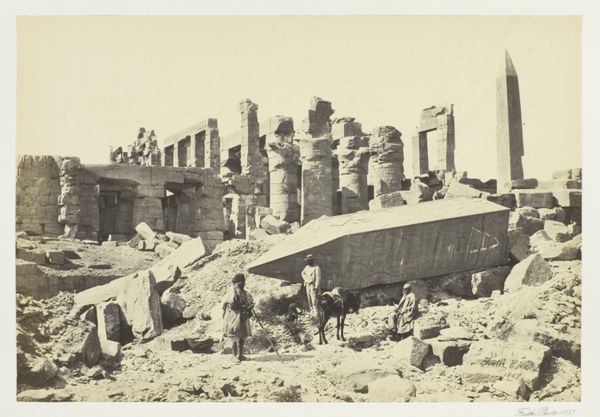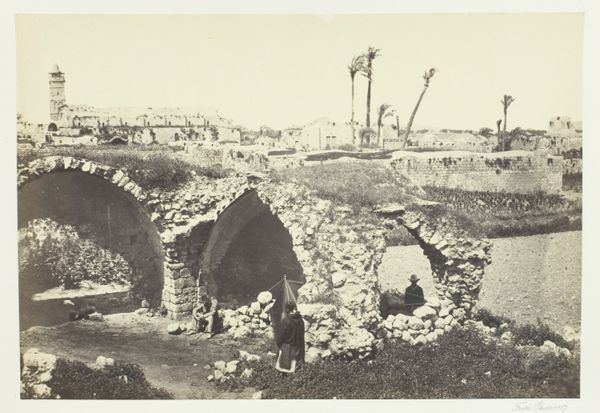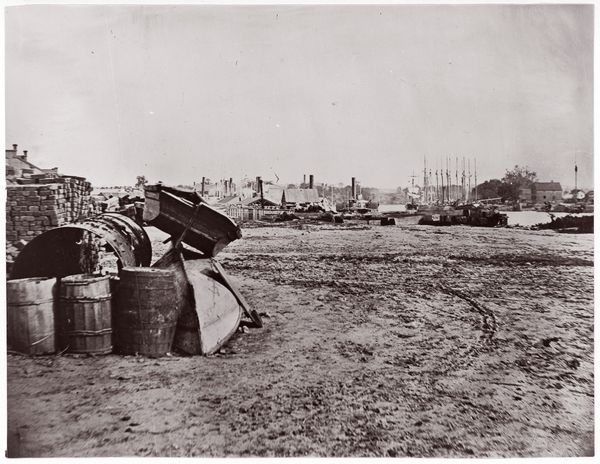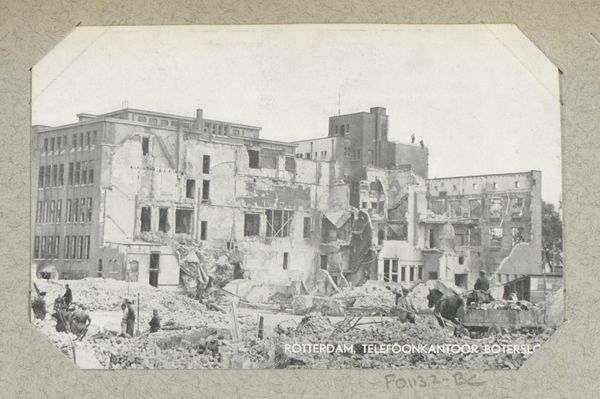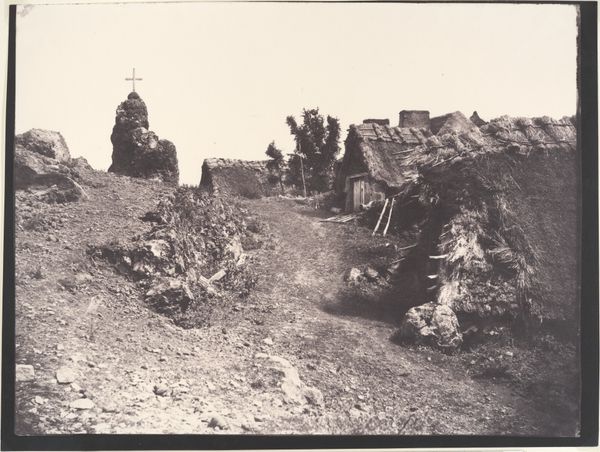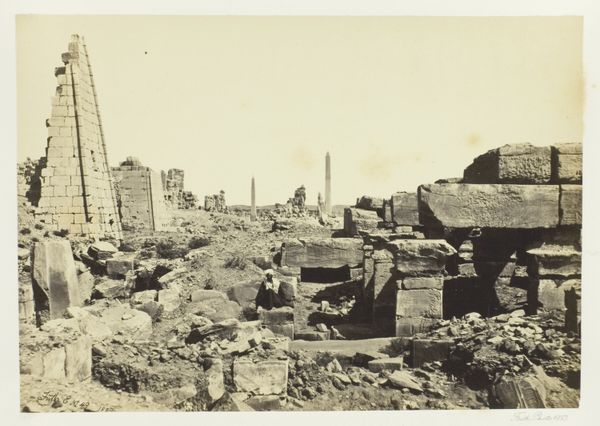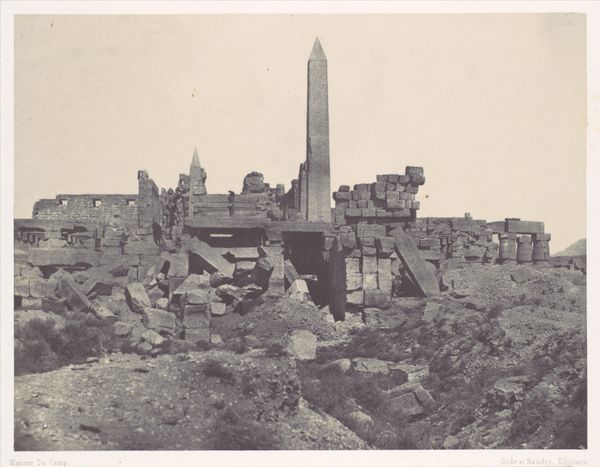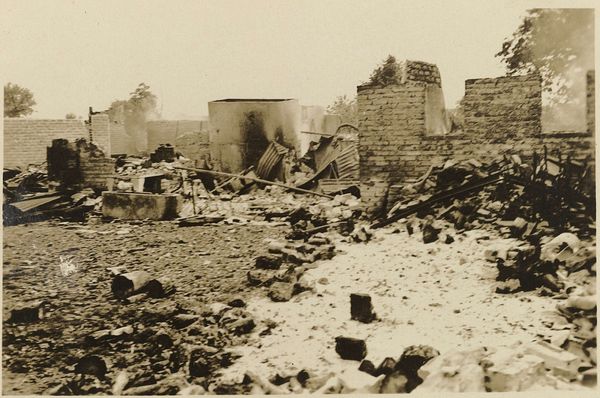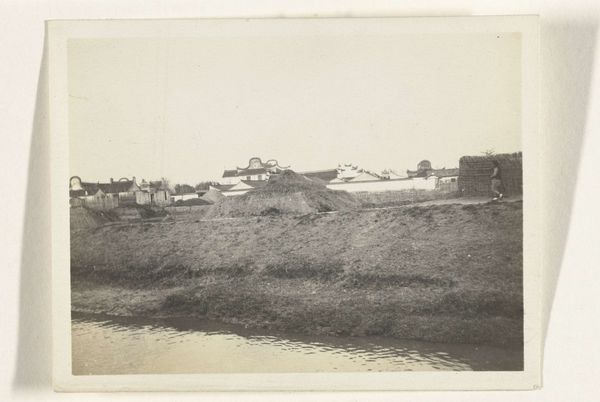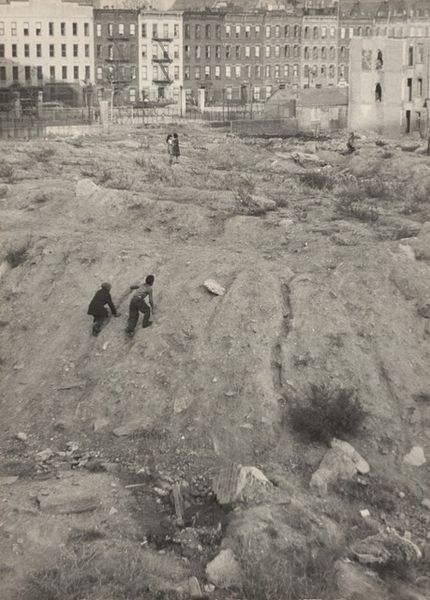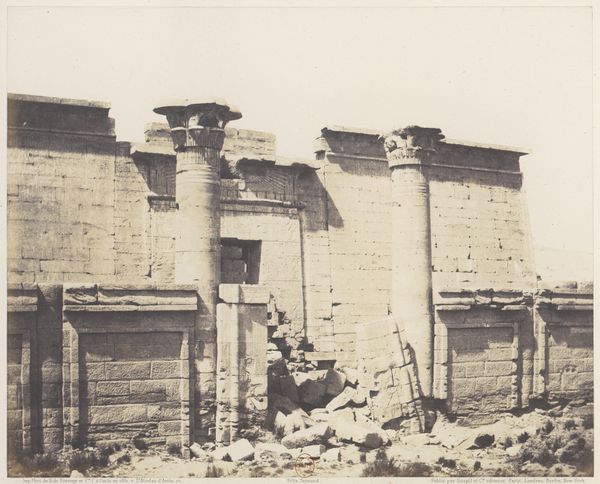
Ruins at end of Richmond and Petersburg Railroad Bridge, Richmond 1861 - 1865
0:00
0:00
print, photography, gelatin-silver-print
#
black and white photography
# print
#
war
#
landscape
#
outdoor photograph
#
photography
#
soldier
#
gelatin-silver-print
#
monochrome photography
#
history-painting
#
realism
#
monochrome
Copyright: Public Domain
Editor: This photograph, taken by Alexander Gardner between 1861 and 1865, showcases the Ruins at the end of Richmond and Petersburg Railroad Bridge in Richmond. It's incredibly stark; the desolation is overwhelming. What does this image communicate to you? Curator: This image presents a crucial visual document of the Civil War and its aftermath, revealing the war's impact on urban infrastructure and, by extension, civilian life. The ruined bridge isn't merely physical damage; it's the deliberate crippling of the South's economic and logistical capacity. Note the carefully composed image showing the almost casual arrangement of the soldiers amid the rubble. Editor: It does feel like the figures are staged in some way, especially against such an impactful landscape of ruin. Why take the photograph? What's its intended purpose? Curator: Gardner, like many photographers documenting the war, was participating in a shift toward a more 'realistic' and arguably less glorified depiction of conflict. Photography offered a seemingly objective lens, yet these images were far from neutral. They were used to shape public perception of the war, its costs, and its justifications, primarily for a Northern audience. These images, widely circulated and exhibited, served to illustrate the Union's victory and the price of rebellion. Do you notice any compositional choices that lead you to this conclusion? Editor: The way the rubble is framed so carefully, maybe? As a testament to something? Curator: Exactly. The photograph isn't just documenting destruction, it's making a statement about power and consequence. Understanding the socio-political context in which these images were produced and consumed is crucial to interpreting their meaning and legacy. Editor: This really sheds a new light on Civil War photography. It’s not just about capturing events, but about shaping historical narratives and cementing perspectives. Curator: Precisely. It serves as a powerful reminder of the public role of art and the complex politics embedded in imagery.
Comments
No comments
Be the first to comment and join the conversation on the ultimate creative platform.
